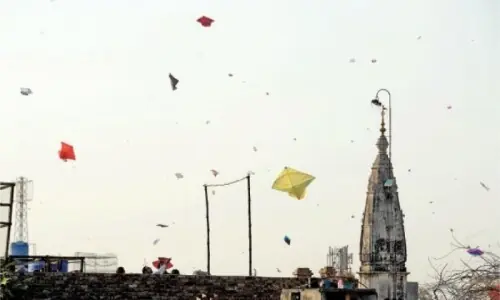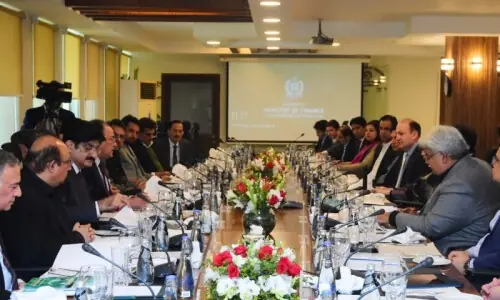WASHINGTON: Al Qaeda leader Ayman al Zawahiri had been in hiding for years, and the operation to locate and kill him was the result of “careful patient and persistent” work by the counter-terrorism and intelligence community, a senior Biden administration official told reporters.
“Now justice has been delivered, and this terrorist leader is no more,” US President Joe Biden said in televised remarks from the White House on Monday evening as he announced the killing of Al Qaeda leader Ayman al-Zawahiri in a drone strike in downtown Kabul.
“No matter how long it takes, no matter where you hide, if you are a threat to our people, the United States will find you and take you out.”
The elusive 71-year-old
Al Qaeda leader had evaded US efforts to take him out for 21 years. His predecessor Osama bin Laden was killed in May 2011 in Abbottabad, a decade after the 9/11 terrorist attacks they planned and executed.
While Bin Laden was the face of Al Qaeda, Zawahiri was considered its brain,
who did most of the strategic planning for the group. US media reports claimed that Zawahiri was living in the Helmand province before he moved to Kabul after the Taliban captured the Afghan capital in August 2021. He lived in the leafy Kabul neighborhood called Sherpur.Until the US announcement, Zawahiri had been rumored variously to be in Pakistan’s tribal areas or inside Afghanistan.
Speaking on condition of anonymity, an official provided Reuters the following details on the operation: For several years, the U.S. government had been aware of a network that it assessed supported Zawahiri, and over the past year, following the US withdrawal from Afghanistan, officials had been watching for indications of Al Qaeda’s presence in the country.
This year, officials identified that Zawahiri’s family - his wife, his daughter and her children - had relocated to a safe house in Kabul and subsequently identified Zawahiri at the same location.
Over several months, intelligence officials grew more confident that they had correctly identified Zawahiri at the Kabul safe house and in early April started briefing senior administration officials. Jake Sullivan, National Security Advisor, subsequently briefed President Joe Biden.
“We were able to build a pattern of life through multiple independent sources of information to inform the operation,” the official said.
Once Zawahiri arrived at the Kabul safe house, officials were not aware of him leaving it and they identified him on its balcony – where he was ultimately struck – on multiple occasions, the official said.
Officials investigated the construction and nature of the safe house and scrutinized its occupants to ensure the US could confidently conduct an operation to kill Zawahiri without threatening the structural integrity of the building and minimizing the risk to civilians and Zawahiri’s family, the official said.
In recent weeks, the president convened meetings with key advisors and Cabinet members to scrutinize the intelligence and evaluate the best course of action.
On July 1, Biden was briefed on a proposed operation in the White House Situation Room by members of his cabinet including CIA Director William Burns. Biden “asked detailed questions about what we knew and how we knew it” and closely examined a model of the safe house the intelligence community had built and brought to the meeting.
He asked about lighting, weather, construction materials, and other factors that could affect the success of the operation, the official said. The president also requested analysis of the potential ramifications of a strike in Kabul.
A tight circle of senior inter-agency lawyers examined the intelligence reporting and confirmed that Zawahiri was a lawful target based on his continuing leadership of Al Qaeda.
On July 25, the president convened his key Cabinet members and advisors to receive a final briefing and discuss how killing Zawahiri would affect America’s relationship with the Taliban, among other issues, the official said. After soliciting views from others in the room, Biden authorized “a precise tailored air strike” on the condition that it minimize the risk of civilian casualties.
The strike was ultimately carried out at 0148 GMT (around 6:48am Pakistan time) on July 30 by a drone firing so-called “hellfire” missiles.–Reuters
Task Force Orange
The operation that killed Ayman al-Zawahri in a posh Kabul neighbourhood was partially the work of a US military unit so clandestine that its actual name is a state secret, Vice News reported, quoting Nato officials briefed on the operation.
“It was a huge operation led by the CIA as is typically the case for something like this and everyone plays a specific role,” a senior NATO military official who works closely with the US on counterterrorism told Vice News. “But at the tip of the operation are the people who have to get actual eyes on the target, and that’s where [Task Force] Orange comes in.”
According to Vice, the unit currently known as Task Force Orange was founded in 1980 and initially called the Intelligence Support Activity, before its name became a secret and started being frequently changed.
The unit works within the Joint Special Operations Command (JSOC), and is charged with collecting real-time intelligence to prepare for specifically planned operations, the Vice report said.
“The CIA can tell you a lot about a country and the personalities of its government and opposition, but they’re not designed to figure out things like is there a specific person in that specific house, which way do the doors open, how high are the fences,” the NATO official said.
“That’s what Orange does to prepare for an operation, whether it’s a drone strike like with [Zawahri] or sending in a team of shooters as with [Osama] bin Laden or Baghdadi. They collect the specific details and they do it in person from close up,” the publication quoted the official as saying.
Published in Dawn, August 3rd, 2022

































